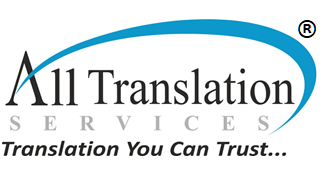The Importance of Patent Translation in a Globalized World
Today, innovation and intellectual property (IP) are more valuable than ever. For inventors, companies, and research institutions, securing patents is a crucial step in protecting their technological advancements and creative solutions. However, as businesses expand their reach across international borders, the need for accurate and reliable patent translation services has become increasingly critical.
Patent translation services is more than just converting text from one language to another. It involves a precise and technical process, requiring an in-depth understanding of both the source and target languages, as well as the specific legal and technical terminology related to patents. This complexity makes patent translation a unique service that calls for specialized expertise.
Why Patent Translation Matters?
Securing a patent is a legal process that grants the patent holder exclusive rights to their invention. These rights, however, are limited to the jurisdiction in which the patent is filed and granted. If a company wants to protect its IP internationally, it must file patents in multiple countries, and this requires translating the patent documents to meet the legal requirements of each region. Here are some reasons why accurate patent translation is so important:
Legal Compliance: Each country has specific legal requirements for patent applications. These documents must not only be translated accurately but also conform to the legal standards of each jurisdiction. An inaccurate translation can result in the rejection of a patent application, loss of rights, or even legal disputes.
Protecting Intellectual Property: Errors in translation can lead to misinterpretations of the patent claims, leaving the invention open to potential infringement or rendering the patent unenforceable. An accurate translation helps ensure the inventor’s rights are clearly defined and enforceable across different regions.
Avoiding Costly Mistakes: Filing patents internationally is a costly and time-consuming process. Mistakes in translation can lead to significant financial losses, as well as delays in securing patent protection. Ensuring a precise translation from the start can save both time and money in the long run.
Enhanced Marketability: A well-translated patent can help a business establish itself in new markets by allowing it to communicate the value of its invention effectively. This is especially important for companies looking to license their technology or enter into partnerships with foreign entities.
Challenges in Patent Translation
Patent translation is not as straightforward as translating general content, given the technical jargon and specificity of legal language involved. Here are some unique challenges:
Technical Complexity: Patent documents often contain highly specialized terminology related to various fields, from biotechnology to mechanical engineering. A translator must have subject-matter expertise in addition to linguistic proficiency to accurately convey these terms in the target language.
Legal Nuances: Patent translations must accurately reflect the legal terminology used in the source language. Different countries may have unique legal concepts and requirements, making it essential for the translator to have knowledge of the local patent law and legal standards.
Cultural and Linguistic Differences: Languages have different structures, and some terms in one language may not have a direct equivalent in another. Translators must be able to bridge these gaps without compromising the meaning or intent of the original patent.
Choosing the Right Patent Translation Service
Given the importance and complexity of patent translation, choosing a reliable service provider is essential. When selecting a patent translation service, consider the following factors:
Expertise in Patent Law and Technical Fields: A reputable patent translation provider will have a team of translators with expertise in both the relevant technical field and the legal aspects of patent translation.
Quality Assurance: A good patent translation service should have a rigorous quality assurance process in place. This might include multiple rounds of review by legal and technical experts to ensure the accuracy and reliability of the translation.
Experience and Track Record: An established translation provider with a long track record in patent translation will have a proven process for handling complex projects and meeting the specific needs of clients across various industries.
Confidentiality and Security: Patent documents contain sensitive information that must be protected. A trustworthy translation provider will have strict security protocols in place to ensure the confidentiality of your intellectual property.
Why Choose Us for Patent Translation
For over 20 years, we have been a trusted partner in the patent translation industry, offering services in over 200 languages. Our team consists of highly qualified patent translators with technical and legal expertise, ensuring that your patent documents are accurately translated and meet all regulatory requirements.
Whether you are looking to expand your IP portfolio internationally or need reliable translation services for patent litigation, we are here to help you protect and grow your innovations worldwide.
Let us support you in safeguarding your intellectual property, no matter where you are in the world.
